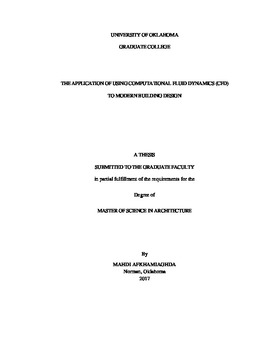| dc.description.abstract | In the last few years, constructing buildings that do not cause any bad destructive effects on the environment (green buildings) has become one of the priorities around the world, especially in the United States (USGBC Research Committee 2008). Passive design is one of the most vital ways to reduce building energy consumption and to improve the built environment. “Passive Design” is a strategy that employs natural ventilation and renewable energies, like solar energy, to this end.
Computational Fluid Dynamics (CFD) is considered one of the best methods that can assist in evaluating how natural ventilation and wind flow occur in our outdoor environment and how this in turn, renders our designs’ effect in their surroundings. CFD has a wide variety of applications in the Automotive and Aerospace industry, and it can also be applied in the building industry, consider this information helping architects understanding how wind behaves around the design of buildings. This method specifically helps in finding the regions in which vortex flow, downward air flow, leeward, and buoyancy occur which can have detrimental effects on the environment.
This research will show the effectiveness and importance of using CFD technology in the early design process as a design assistance tool for architects and for all involved in the design of buildings. Many different models have been created and tested using Autodesk Flow Design- a CFD simulation software which assists in demonstrating the air flow around the building. Subsequently, these models have been studied both individually and compared with each other to 1.) Observe the intensity of wind flow in each environment and 2.) To find correlations between the different variables. The data collected and assimilated in this body of work has assisted in showing the effects of using CFD in the early design process and how the use of CFD would benefit the designers, architects, and the occupants.
This will impact the application and translation of a vernacular architectural feature in a broader scope as a result to offset mechanical ventilation needs. Also showing how CFD can be effective, we suggest the use of a committed design team who do building simulation and analysis, starting from the earliest conceptual design phase to the point of finishing the building, a process which needs to become mandatory in firms just like structural analysis. | en_US |
